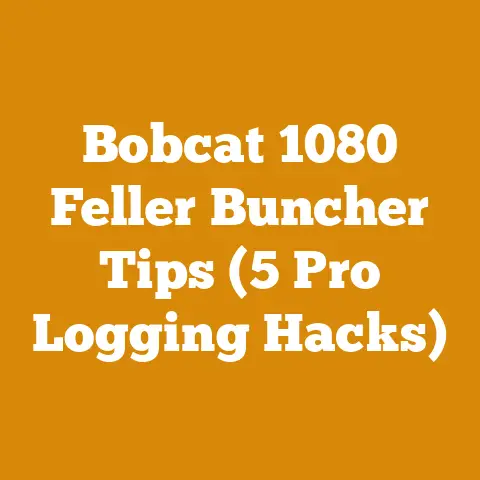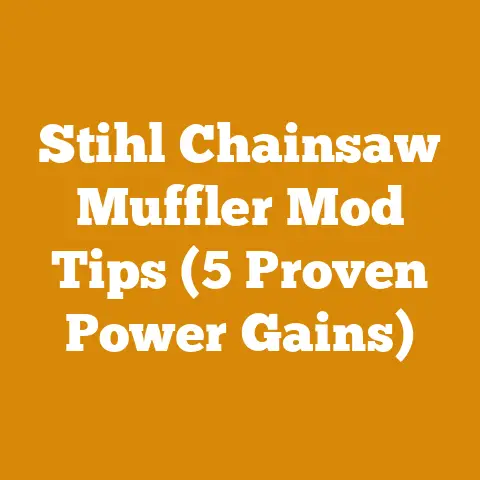Gresen Hydraulic Valve Parts for Tree Farmer C4D (Essential Loggers’ Fix)
Gresen Hydraulic Valve Parts for Tree Farmer C4D (Essential Loggers’ Fix)
As someone who’s spent a good chunk of my life in the heart of the Pacific Northwest, surrounded by towering Douglas firs and the constant hum of logging equipment, I know firsthand the vital role reliable machinery plays in this industry. Up here, a broken-down skidder isn’t just an inconvenience; it’s a potential financial disaster. But even legends need maintenance, and one of the most crucial components to keep running smoothly is the Gresen hydraulic valve. This guide is your essential resource for understanding, troubleshooting, and sourcing parts for your Tree Farmer C4D’s Gresen hydraulic valve.
Why Gresen Hydraulic Valves Matter for Tree Farmer C4Ds
The Gresen hydraulic valve is the heart of your Tree Farmer C4D’s hydraulic system. It controls the flow of hydraulic fluid to various functions, including steering, winch operation, blade control, and grapple movement (if equipped). A malfunctioning valve can cripple your skidder, bringing your logging operation to a standstill.
I remember one particularly brutal winter. We had a Tree Farmer C4D with a Gresen valve that was acting up. The winch would only work intermittently, making it nearly impossible to pull logs up the steep slopes. After days of frustration and lost production, we finally diagnosed a faulty relief valve within the Gresen unit. The cost of the part was minimal, but the downtime was significant. That experience hammered home the importance of preventative maintenance and knowing where to source reliable replacement parts.
Understanding the Gresen Hydraulic Valve System in Your Tree Farmer C4D
Before diving into troubleshooting and parts, it’s crucial to understand the basics of how the Gresen valve system operates within your Tree Farmer C4D.
-
Hydraulic Fluid: The system relies on hydraulic fluid, typically a petroleum-based or synthetic oil, to transmit power. The type of fluid is critical; consult your Tree Farmer C4D’s manual for the correct specification. Using the wrong fluid can damage seals and other components.
-
Hydraulic Pump: Driven by the engine, the hydraulic pump generates the pressure needed to operate the system. A failing pump will starve the Gresen valve of fluid, leading to sluggish or non-existent operation of hydraulic functions.
-
Gresen Valve Body: The main body of the valve houses a series of spools, springs, and relief valves that control the direction and pressure of the hydraulic fluid.
-
Spools: These sliding valves are actuated by levers or cables, directing the flow of fluid to the appropriate hydraulic cylinder or motor.
-
Relief Valves: These safety devices protect the system from over-pressure. If the pressure exceeds a pre-set limit, the relief valve opens, diverting fluid back to the reservoir.
-
Hydraulic Cylinders and Motors: These are the actuators that perform the work, such as steering the skidder or powering the winch.
Common Problems with Gresen Hydraulic Valves on Tree Farmer C4Ds
Over time, Gresen hydraulic valves can develop various problems. Identifying these issues early can prevent more serious damage and costly repairs.
-
Leaks: Leaks are a common sign of worn seals or damaged valve bodies. Look for leaks around the valve body, spool ends, and fittings.
-
Sluggish Operation: Slow or weak hydraulic functions can indicate low pressure, a sticking spool, or internal leakage within the valve.
-
Intermittent Operation: This can be caused by a sticking spool, a faulty solenoid (if equipped), or a loose electrical connection.
-
Overheating: Excessive heat can damage seals and cause the hydraulic fluid to break down. Overheating can be caused by a faulty relief valve, a restricted flow, or a failing hydraulic cooler.
-
No Operation: A complete lack of hydraulic function can indicate a major problem, such as a seized spool, a blown relief valve, or a failing hydraulic pump.
-
Contamination: Dirt, metal shavings, and other contaminants can damage the valve’s internal components, leading to premature wear and failure.
Troubleshooting Your Tree Farmer C4D’s Gresen Hydraulic Valve: A Step-by-Step Guide
Troubleshooting hydraulic problems can seem daunting, but by following a systematic approach, you can often identify the root cause of the issue.
-
Visual Inspection: Begin with a thorough visual inspection. Look for leaks, damaged hoses, loose fittings, and any signs of physical damage to the valve body.
-
Check Hydraulic Fluid Level: Ensure the hydraulic fluid reservoir is filled to the correct level. Low fluid levels can cause cavitation and damage to the pump and valve.
-
Inspect Hydraulic Fluid Condition: Check the condition of the hydraulic fluid. If it’s milky, discolored, or contains debris, it needs to be changed.
-
Pressure Testing: Use a hydraulic pressure gauge to check the system pressure at various points in the system. Compare the readings to the specifications in your Tree Farmer C4D’s manual. Low pressure can indicate a failing pump, a leaking relief valve, or internal leakage within the valve.
-
Spool Movement: Check the movement of the spools. They should move freely and smoothly. Sticking or binding spools can indicate contamination or damage.
-
Relief Valve Testing: If you suspect a faulty relief valve, you can test it using a hydraulic pressure gauge and a flow meter. Consult your Tree Farmer C4D’s manual for the correct testing procedure.
-
Component Isolation: If you’re still unable to pinpoint the problem, try isolating individual components. For example, you can disconnect a hydraulic cylinder and cap off the lines to see if the problem disappears.
Example: Troubleshooting a Slow Winch
Let’s say your winch is operating very slowly. Here’s how you might troubleshoot the issue:
- Visual Inspection: Check for leaks around the winch motor and the Gresen valve.
- Fluid Level and Condition: Ensure the hydraulic fluid is at the correct level and in good condition.
- Pressure Testing: Check the hydraulic pressure at the winch motor while the winch is operating. Compare the reading to the specification in your manual.
- Spool Movement: Check the movement of the winch spool on the Gresen valve.
- Winch Motor Inspection: If the pressure is within spec, the problem may lie within the winch motor itself. Consider having it inspected by a qualified hydraulic technician.
Important Safety Note: Hydraulic systems operate under high pressure. Always relieve the pressure before disconnecting any lines or components. Wear safety glasses and gloves to protect yourself from hydraulic fluid.
Identifying the Correct Gresen Valve Parts for Your Tree Farmer C4D
Once you’ve identified the problem, you’ll need to source the correct replacement parts. This can be tricky, as Gresen valves come in various configurations and part numbers.
-
Valve Identification: The first step is to identify the exact model and part number of your Gresen valve. This information is typically stamped on the valve body. Look for a metal tag or stamped markings.
-
Tree Farmer C4D Parts Manual: Your Tree Farmer C4D’s parts manual is an invaluable resource. It will list the correct Gresen valve part numbers for your specific model and serial number.
-
Gresen Parts Catalog: Online Gresen parts catalogs can help you identify the correct parts based on the valve model number.
-
Cross-Referencing: If you can’t find the exact Gresen part number, you may be able to cross-reference it to a more common part number from another manufacturer. Hydraulic supply houses often have cross-reference charts.
-
Local Hydraulic Supply House: Your local hydraulic supply house is a great resource for identifying and sourcing Gresen valve parts. The staff can often help you identify the correct parts based on your valve model number and the symptoms you’re experiencing.
-
Online Retailers: Several online retailers specialize in hydraulic parts. Be sure to purchase from a reputable source to ensure you’re getting genuine Gresen parts.
Common Gresen Valve Parts:
- Seals and O-Rings: These are the most common replacement parts, as they tend to wear out over time.
- Spools: Damaged or worn spools can cause sluggish or intermittent operation.
- Relief Valves: Faulty relief valves can cause overheating or low pressure.
- Springs: Broken or weakened springs can affect the valve’s performance.
- Valve Bodies: Damaged valve bodies may require complete valve replacement.
Example: Finding a Seal Kit
Let’s say you’ve identified a leak around the spool of your Gresen valve. You’ll need to find a seal kit that’s compatible with your valve model.
- Identify the Valve Model: Locate the model number stamped on the valve body.
- Consult the Parts Manual: Check your Tree Farmer C4D’s parts manual for the seal kit part number.
- Search Online: Search online for “Gresen valve seal kit [valve model number]”.
- Contact a Hydraulic Supply House: Call your local hydraulic supply house and provide them with the valve model number.
Replacing Gresen Valve Parts: A Practical Guide
Replacing Gresen valve parts can be a straightforward process, but it’s essential to follow proper procedures to avoid damaging the valve or injuring yourself.
-
Safety First: Before starting any work, relieve the hydraulic pressure in the system. Disconnect the battery to prevent accidental starting of the engine. Wear safety glasses and gloves.
-
Cleanliness: Cleanliness is crucial when working with hydraulic components. Dirt and debris can damage the valve’s internal parts.
-
Disassembly: Carefully disassemble the valve, taking note of the location and orientation of each part. Use a clean workspace and organize the parts as you remove them.
-
Inspection: Inspect all parts for wear, damage, or contamination. Replace any parts that are worn or damaged.
-
Seal Replacement: When replacing seals, use the correct size and type of seal. Lubricate the seals with hydraulic fluid before installation.
-
Reassembly: Reassemble the valve carefully, following the reverse order of disassembly. Ensure all parts are properly aligned and tightened to the correct torque specifications.
-
Testing: After reassembly, test the valve to ensure it’s functioning correctly. Check for leaks and proper operation of all hydraulic functions.
Example: Replacing a Spool Seal
Here’s a step-by-step guide to replacing a spool seal on a Gresen valve:
- Relieve Pressure and Disconnect Battery: As mentioned above.
- Clean the Valve: Clean the outside of the valve with a degreaser and a brush.
- Remove the Spool End Cap: Remove the end cap that retains the spool in the valve body. This is typically held in place by screws or bolts.
- Carefully Remove the Spool: Gently slide the spool out of the valve body. Be careful not to scratch or damage the spool.
- Remove the Old Seal: Use a small pick or screwdriver to remove the old seal from the spool end cap.
- Install the New Seal: Lubricate the new seal with hydraulic fluid and install it in the spool end cap.
- Reinstall the Spool: Carefully slide the spool back into the valve body.
- Reinstall the End Cap: Reinstall the end cap and tighten the screws or bolts to the correct torque specification.
- Test the Valve: Connect the hydraulic lines and test the valve to ensure it’s functioning correctly.
Preventative Maintenance for Your Tree Farmer C4D’s Gresen Hydraulic Valve
Preventative maintenance is the key to extending the life of your Gresen hydraulic valve and avoiding costly breakdowns.
-
Regular Fluid Changes: Change the hydraulic fluid at the intervals recommended in your Tree Farmer C4D’s manual. This will remove contaminants and ensure the fluid is in good condition.
-
Filter Maintenance: Replace the hydraulic filters regularly. Clogged filters can restrict flow and cause the pump to overheat.
-
Leak Inspections: Regularly inspect the valve and hydraulic lines for leaks. Repair any leaks promptly to prevent fluid loss and contamination.
-
Proper Lubrication: Lubricate the valve’s moving parts, such as the spool linkages, according to the manufacturer’s recommendations.
-
System Flushing: Periodically flush the hydraulic system to remove contaminants and sludge.
-
Operating Practices: Avoid operating the hydraulic system at excessive pressures or temperatures.
Maintenance Schedule Example:
- Daily: Check hydraulic fluid level and inspect for leaks.
- Weekly: Lubricate spool linkages.
- Monthly: Inspect hydraulic hoses for damage.
- Annually: Change hydraulic fluid and filters.
- Every 3 Years: Flush the hydraulic system.
When to Seek Professional Help
While many Gresen valve repairs can be performed by a mechanically inclined individual, some repairs require specialized tools and expertise.
- Major Valve Damage: If the valve body is cracked or severely damaged, it’s best to replace the entire valve.
- Complex Internal Repairs: Repairs involving the valve’s internal components, such as the relief valves or pressure regulators, may require specialized tools and knowledge.
- Lack of Experience: If you’re not comfortable working with hydraulic systems, it’s best to seek professional help.
A qualified hydraulic technician can diagnose and repair complex hydraulic problems, ensuring your Tree Farmer C4D is back in operation quickly and safely. They will have the proper tools, knowledge, and experience to handle any hydraulic repair.
Sourcing Reliable Gresen Hydraulic Valve Parts: My Top Recommendations
Over the years, I’ve learned that not all parts are created equal. Sourcing reliable, genuine Gresen parts is crucial for ensuring the longevity and performance of your Tree Farmer C4D. Here are my top recommendations:
-
Your Local Tree Farmer Dealer: Your local Tree Farmer dealer is the best place to start your search for Gresen valve parts. They have access to the original equipment manufacturer (OEM) parts and can provide expert advice.
-
Reputable Hydraulic Supply Houses: Look for hydraulic supply houses that specialize in Gresen valves and parts. These companies typically have a wide selection of parts in stock and can provide technical support.
-
Online Retailers with a Proven Track Record: Several online retailers offer Gresen valve parts. However, it’s essential to choose a retailer with a proven track record of selling genuine parts and providing excellent customer service. Read reviews and check their return policy before making a purchase.
-
Avoid “Too Good to Be True” Deals: Be wary of extremely low prices on Gresen valve parts. These parts may be counterfeit or of inferior quality.
Specific Retailer Recommendations (Based on General Reputation – Always Do Your Own Research):
- Motion Industries: A large industrial distributor with a wide selection of hydraulic components.
- Hydraulic SuperSource: Specializes in hydraulic parts and offers technical support.
- Bailey Hydraulics: Offers a wide range of hydraulic components and accessories.
Important Note: Always verify the part number and compatibility before purchasing any Gresen valve parts.
Upgrading Your Tree Farmer C4D’s Hydraulic System
While maintaining your existing Gresen valve is often the most cost-effective solution, there may be situations where upgrading your hydraulic system is beneficial.
-
Increased Performance: Upgrading to a higher-capacity hydraulic pump or valve can improve the performance of your Tree Farmer C4D, allowing you to handle heavier loads and work more efficiently.
-
Improved Reliability: Replacing an old or worn-out Gresen valve with a newer model can improve the reliability of your hydraulic system and reduce the risk of breakdowns.
-
Added Features: Upgrading to a valve with additional features, such as electric over hydraulic controls, can enhance the functionality of your Tree Farmer C4D.
Before upgrading your hydraulic system, consult with a qualified hydraulic technician to determine the best options for your specific needs and budget.
Safety Considerations When Working with Hydraulic Systems
Working with hydraulic systems can be dangerous if proper safety precautions are not followed.
- Relieve Pressure: Always relieve the hydraulic pressure before disconnecting any lines or components.
- Wear Safety Glasses and Gloves: Hydraulic fluid can be harmful to your eyes and skin.
- Avoid High-Pressure Fluid Injection: Never place your hands or body near high-pressure hydraulic lines. Hydraulic fluid can penetrate the skin and cause serious injury.
- Use Proper Tools: Use the correct tools for the job. Avoid using makeshift tools or methods.
- Keep Work Area Clean: Keep your work area clean and free of debris.
- Follow Manufacturer’s Instructions: Always follow the manufacturer’s instructions when working with hydraulic components.
- Seek Professional Help: If you’re not comfortable working with hydraulic systems, seek professional help.
The Future of Hydraulic Systems in Logging Equipment
Hydraulic systems have been a mainstay in logging equipment for decades, and they will likely continue to play a vital role in the industry for the foreseeable future. However, advancements in technology are leading to new developments in hydraulic systems.
- Electric Over Hydraulic (EOH) Controls: EOH controls offer improved precision and control compared to traditional mechanical controls.
- Load-Sensing Hydraulics: Load-sensing hydraulic systems adjust the flow and pressure of the hydraulic fluid based on the load demand, improving efficiency and reducing fuel consumption.
- Hybrid Hydraulic Systems: Hybrid hydraulic systems combine electric motors with hydraulic components to improve efficiency and reduce emissions.
These advancements are making hydraulic systems more efficient, reliable, and environmentally friendly. As technology continues to evolve, we can expect to see even more innovative hydraulic solutions in logging equipment.
Final Thoughts: Keeping Your Tree Farmer C4D Running Strong
The Gresen hydraulic valve is a critical component of your Tree Farmer C4D, and maintaining it properly is essential for keeping your logging operation running smoothly. By understanding the valve’s operation, troubleshooting common problems, sourcing reliable parts, and following proper maintenance procedures, you can extend the life of your valve and avoid costly breakdowns. Remember, a well-maintained Tree Farmer C4D is a productive Tree Farmer C4D. And in this business, productivity is the name of the game. Now get out there and keep those logs moving!






